Best GPS Watch
Best GPS Watch for Running
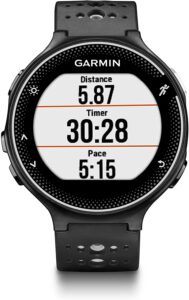
Best GPS Watch for Golf
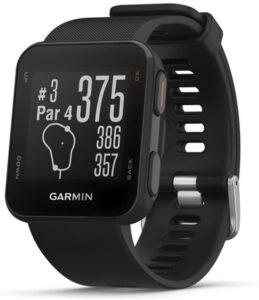
Best GPS Watch for Kids
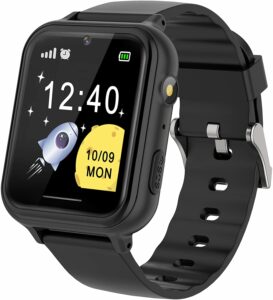
Best GPS Watch for Hiking/Backpacking
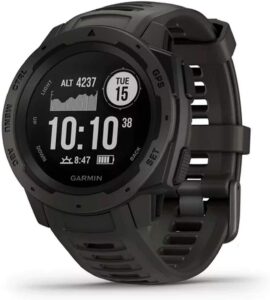
Best GPS Watch for Hunting
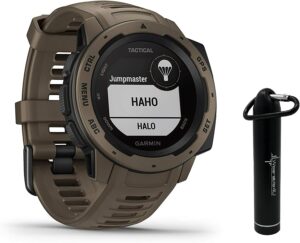
What to look for in a GPS watch based on the activity you’ll be using it for
Walking & Running
For walkers or novice runners, basic watches that track time, distance, and speed are enough. All GPS watches do this nowadays, so just go with what you like — style preference, price point, and any extra features.
For those who run more heavily, there are watches that also include heart rate monitoring, pre-programmed interval workouts, and usually more detailed or customizable screens to display multiple data fields of your choice. more advanced likely won’t be needed. Some models also allow you to download your runs to a computer or phone to better track and log your information.
Cycling
For basic cycling, a watch should display your speed in miles or kilometers per hour as a minimum. Thankfully, every GPS watch does this. If you want something that offers more, find a model that tracks bike speed using a cadence sensor. This accessory measures the bike speed using the number of wheel rotations, similar to a traditional cyclometer (this comes in handy when the GPS isn’t working for whatever reason). If you own multiple bikes, check if the watch can be customized for more than one bike so you don’t have to constantly readjust the wheel size setting when tracking your speed and cadence.
For advanced cyclists, GPS watches should be compatible with a power meter. A power meter is a tool that measures power output while cycling. It gives you an idea of just how much force you’re exerting while pedaling, unlike the cadence sensor that gives you overall speed (think of the power output difference when pedaling uphill versus down a hill).
Hiking
There are a lot of GPS watches geared toward hikers that have your general GPS trail tracking, but not all of them take elevation into consideration. While GPS elevation isn’t necessarily 100% accurate, it’ll give you a general idea of what altitude you’re at. If you’re really wanting to track your elevation changes, find a model with a barometer — barometers are far more accurate than GPS elevation. They also have sensors to detect the temperature.
If you’re camping overnight while hiking, it’ll be helpful to have a watch with good luminosity so you can actually see it at night whether you’re on the move or at your campsite.
Hunting
Like GPS watches for hiking, most hunters will have a watch with a GPS navigation system that comes in handy when trekking through unknown spots in fields or forests. This tracking technology can also come with some extras, like marking down spots of interest for future reference or even “shot detection” technology to mark where you took your shot.
Also similar to hiking watches, GPS watches for hunters should come with a compass and barometer. Going one step further, look for models with an altimeter. The combination of an altimeter and a barometer will give you a good look at surrounding mountainous regions and weather conditions when out on a hunt.
Hunting trips can often start or end when it’s dark out, and most hunting GPS watches come with an LED light or luminosity to help you see no matter the lighting conditions.
Other features to take into consideration
Battery Life
Most GPS watches run on rechargeable lithium-ion batteries and will last around 10-12 hours before needing to recharge. There are some outliers that’ll last 15-20+ hours, which are definitely useful if you’re out on a multi-day trek. It’s important to remember that how you use your watch will truly determine its battery life — frequently using the backlight/LED, storing it improperly (in the extreme heat/cold/humidity), and the overall age of the battery will change how long the battery will last per charge.
Water Resistance
Every GPS watch will be sweat- and rain-proof, but not all are waterproof enough to be fully submerged. GPS watches lose satellite signal underwater, so models used for swimming are essentially just being used as a stopwatch.
Water resistance for GPS watches is rated using the IPX system — in layman’s terms, it essentially means that the watch can be submerged in water and survive, but not for long periods of time. When looking at a watch’s water resistance, just make sure it clearly states “water-resistant to at least 30 meters” if you’re looking for anything more than splash-proof.
Other Training Aids
For runners, “auto-lap” and “auto-pause” features can be extremely helpful. Most GPS watches will automatically mark a lap at a certain distance, whether it be 1/4 mile, 1/2 mile, mile, etc. (You can typically choose the distance you want to mark laps within the watch, but the default is usually per mile.) Along with auto-lap, an auto-pause feature is great whenever you stop mid-run. Most models will automatically detect when you’ve stopped running instead of you needing to push a start/stop button every time. It may take your watch a couple seconds to realize you’ve stopped, but it’ll certainly give you a better idea of your mile/minute and other specs when you can take your stop time into account.
Another handy feature is having customizable screens — these allow you to choose which data fields you want displayed on different screens. You’re usually able to display anywhere from one to six different types of data specs per screen. Having all your data on one screen can save you time when looking for specific information after a run or hike.
Best GPS Watch for Running

The Garmin Forerunner 235 is your ideal GPS watch for running. It comes with the Elevate heart rate technology, a variety of activity tracking, and smart notifications (email, text, call, calendar, etc) when synced up with your smartphone. You can easily customize your watch to display the metrics you want to see together on the 44% larger screen than the Forerunner 225. Battery life lasts you 11 hours of training or up to 9 days of regular watch use, so you can stay on pace and keep running.
Best GPS Watch for Golf

Your golf game has never been easier than with this GPS golf watch by Garmin. The high-resolution easy-to-read display provides yardage throughout the course (including hazards) for more than 41,000 preloaded golf courses world wide. You can keep score on your watch as you play, plus it tracks the total distance and time you play and upload them to the Garmin Express for a handy summary of your rounds. And feel free to play a few rounds — the Approach S10 is good for up to 12 hours until it needs a recharge.
Best GPS Watch for Kids

The PTHTECHUS smartwatch is a great option for kids to have the convenience of a GPS smartwatch without the high price point. The design is lightweight and small enough for a child’s wrist while still having a high definition display screen for easy use. This smartwatch comes with preloaded games, the ability to download music, a camera and video recorder, an emergency SOS feature, and ten contact spaces for friends and family. Kids can also customize the watch face with photos they’ve taken to really make the watch their own!
Best GPS Watch for Hiking/Backpacking

This rugged Garmin GPS smartwatch is built to withstand even the toughest of environments, making it a great choice for hiking and backpacking. It’s designed with U.S. military standards for thermal, shock, and water resistance, plus it works with multiple global navigation systems to keep you on track at all times. A built-in compass, barometer, and altimeter give you the direction and geographical information you need during your trek, while the heart monitor and activity tracker keep you in the know for your personal health. This GPS watch can last up to 14 days in smartwatch mode, up to 16 hours while using GPS, and up to 40 hours while in battery saver mode — so you can worry less about it dying on you during your adventures.
Best GPS Watch for Hunting

The tactical version of the Garmin Instinct is the perfect GPS watch for your hunting expeditions. It comes with thermal, shock, and water resistance to tackle any environment, plus a chemically strengthened display with a night vision mode so you can stay updated even if the sun goes down before your hunt is over. The built-in navigation sensors work with three different global satellite systems to track you and your environment better than with GPS alone. You’ll also love the tactical-specific features that’ll help you during your hunt, including a stealth mode and waypoint projection (mark and store locations or landmarks along the way).
FAQs about GPS Watches
How much do GPS watches usually cost?
GPS watches can cost anywhere from $50 to over $250, depending on the model and its features. Anything ranging from $50-$150 typically has just the basics — like tracking time, distance, speed, pace, and/or calories. Not all of them are compatible with heart rate monitors, either. The next step up, ranging from $150 to $250, usually supports more features like heart rate monitors, bike speed for cycling, and can usually be programmed with more training apps and workouts. GPS watches over $250 are usually designed for specific activities, like marathon runners or triathletes. They tend to have longer battery life and more advanced training tools than their less expensive counterparts.
How can I make my watch’s battery life last longer?
A lot of factors can suck your watch’s battery life away faster than others. If you frequently use the GPS tracking, the LED/backlight, or the training/sensor tracking (heart rate, speed sensor, etc.), the battery will drain much quicker. If you aren’t needing to use a specific feature, be sure to switch it off to save battery. A lot of smartwatches also have a battery saver mode to help you maintain battery life when you aren’t actively using it.
What’s the difference between a barometer and an altimeter on my GPS watch?
Altimeters use a built-in pressure sensor to measure the air pressure to tell you your approximate altitude. (They tend to be more accurate than when just using GPS.) A barometer measures the same air pressure and tells you about climatic trends — aka, if there was a sudden drop in pressure, time to grab your rain jacket.

